
Multicasting
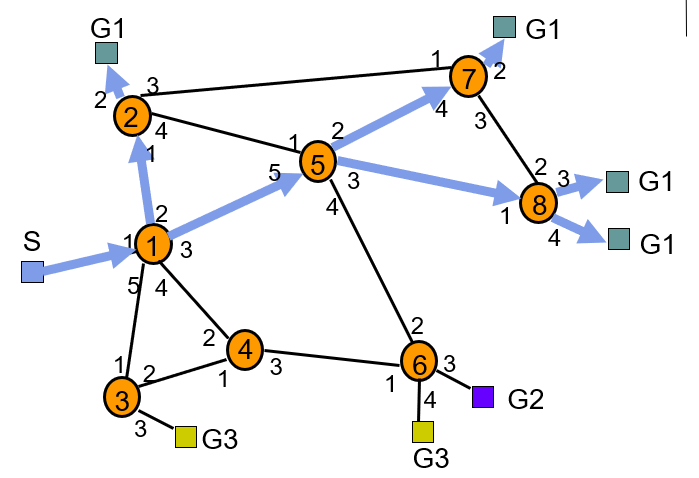
- Source S sends packets to multicast group G1 (and minimize the number of copies)
Reverse-Path Broadcasting (RPB)
- Reverse-Path Broadcasting(反向路径广播)
- Fact: Set of shortest paths to the source node S forms a shortest path tree that spans the network
- Approach: Follow paths in reverse direction
- Assume each router knows current shortest path to S
- Upon receipt of a multicast packet, router records the packet’s source address and the port it arrives on
- If shortest path to source is through same port (“parent port”), router forwards the packet to all other ports
- Else, router drops the packet
- Loops are suppressed; each packet forwarded a router exactly once
- Implicitly assume shortest path to source S is same as shortest path from source
Example: Shortest Paths from S
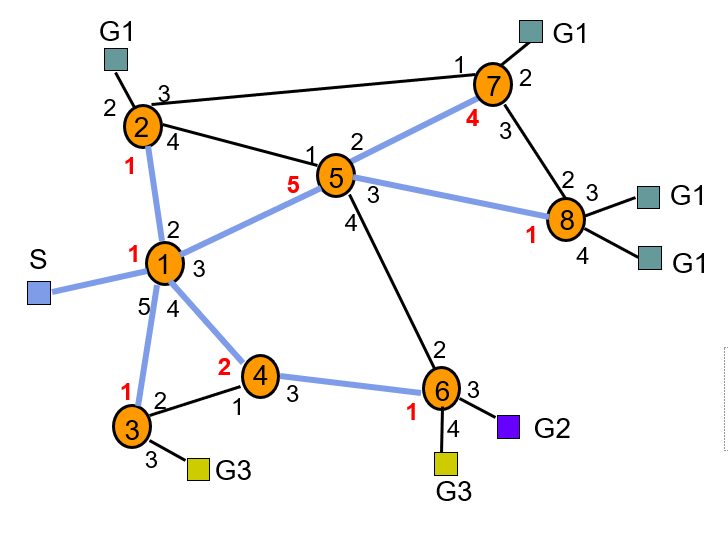
- Spanning tree of shortest paths to node S and parent ports are shown in read
Example: S sends a packet
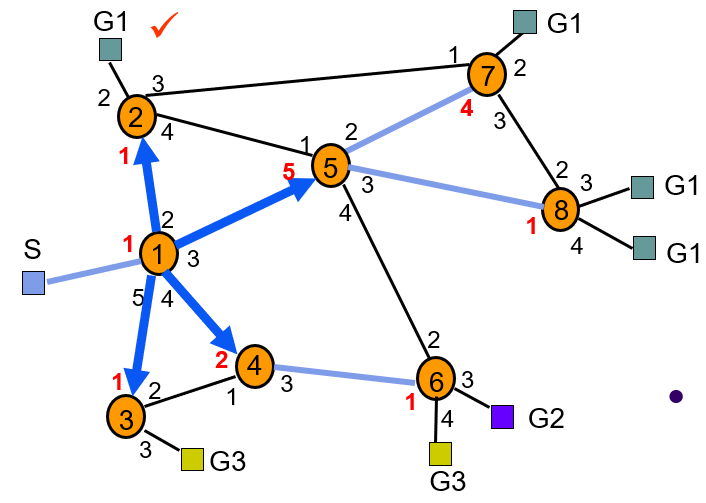
- Node 1 forwards it to all other ports (links shown in blue)
Example: Hop 1 nodes broadcast
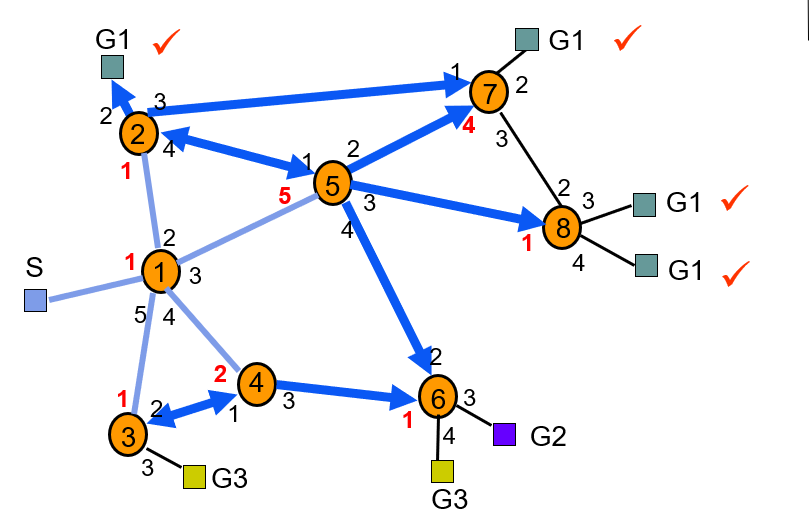
- Nodes 2, 3, 4, and 5 broadcast, except on parent ports
Example: Broadcast continues
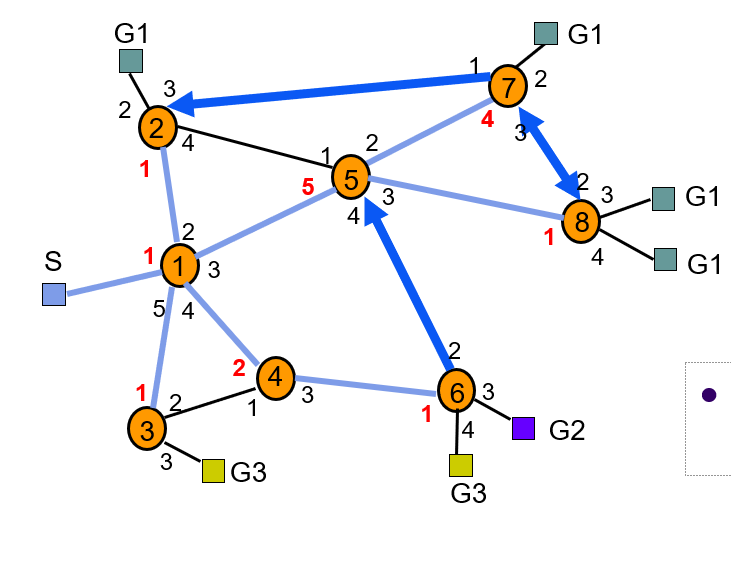
- All nodes, not only G1, receive packets
Truncated RPB (TRPB)
- Truncated RPB (TRPB): Leaf routers do not broadcast if none of its attached hosts belong to packet’s multicast group
Internet Group Management Protocol
- Internet Group Management Protocol (IGMP): allows a host to signal its multicast group membership to its attached router
- Each multicast router periodically sends an IGMP query message to check whether there are hosts belonging to multicast groups
- Routers determine which multicast groups are associated with a certain port
- Routers only forward packets on ports that have hosts belonging to the multicast group
Reverse-Path Multicasting
- Reverse Path Multicasting (RPM) relies on IGMP to identify multicast group membership
- RPM is an enhancement of TRPB, but unlike TRPB, RMP forwards a multicast packet only to a router that will lead to a leaf router with group members.
posted @
2017-10-27 22:26
范加索尔拉
阅读(
295)
评论()
编辑
收藏
举报








